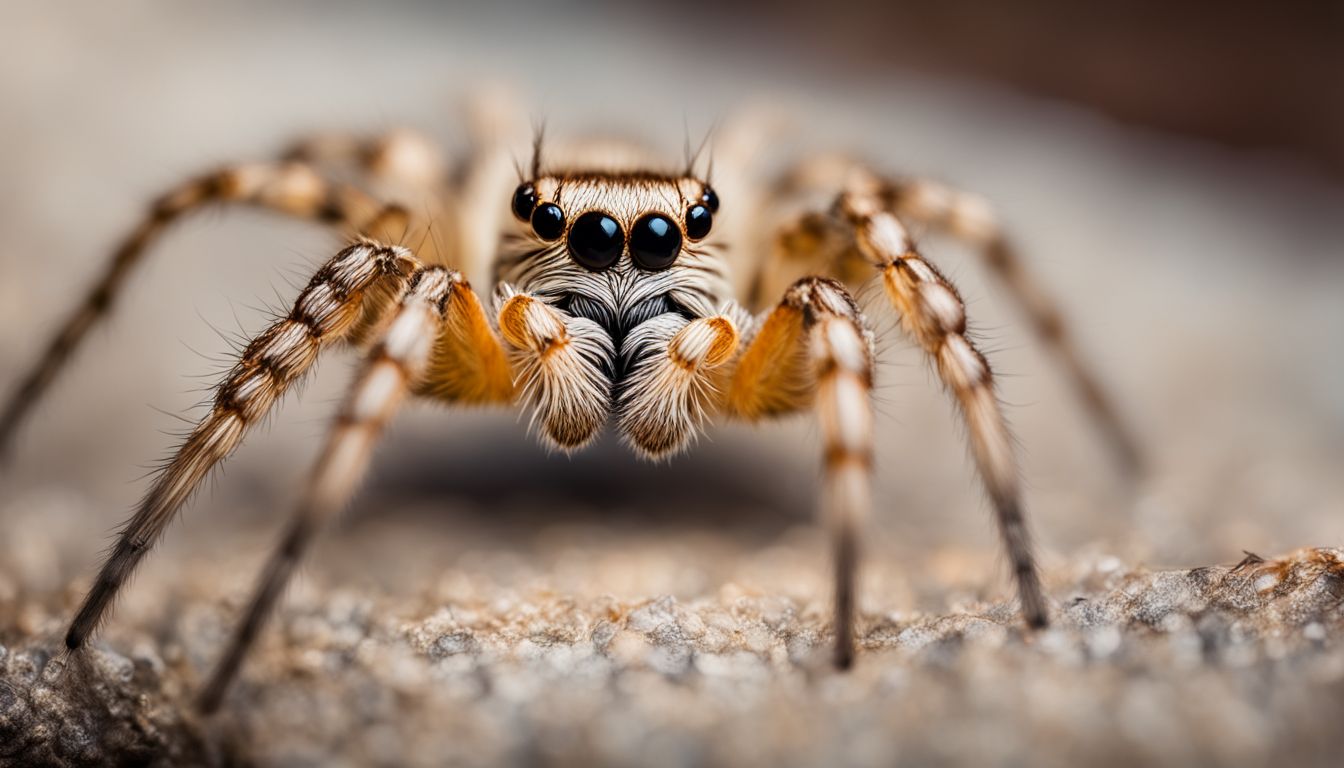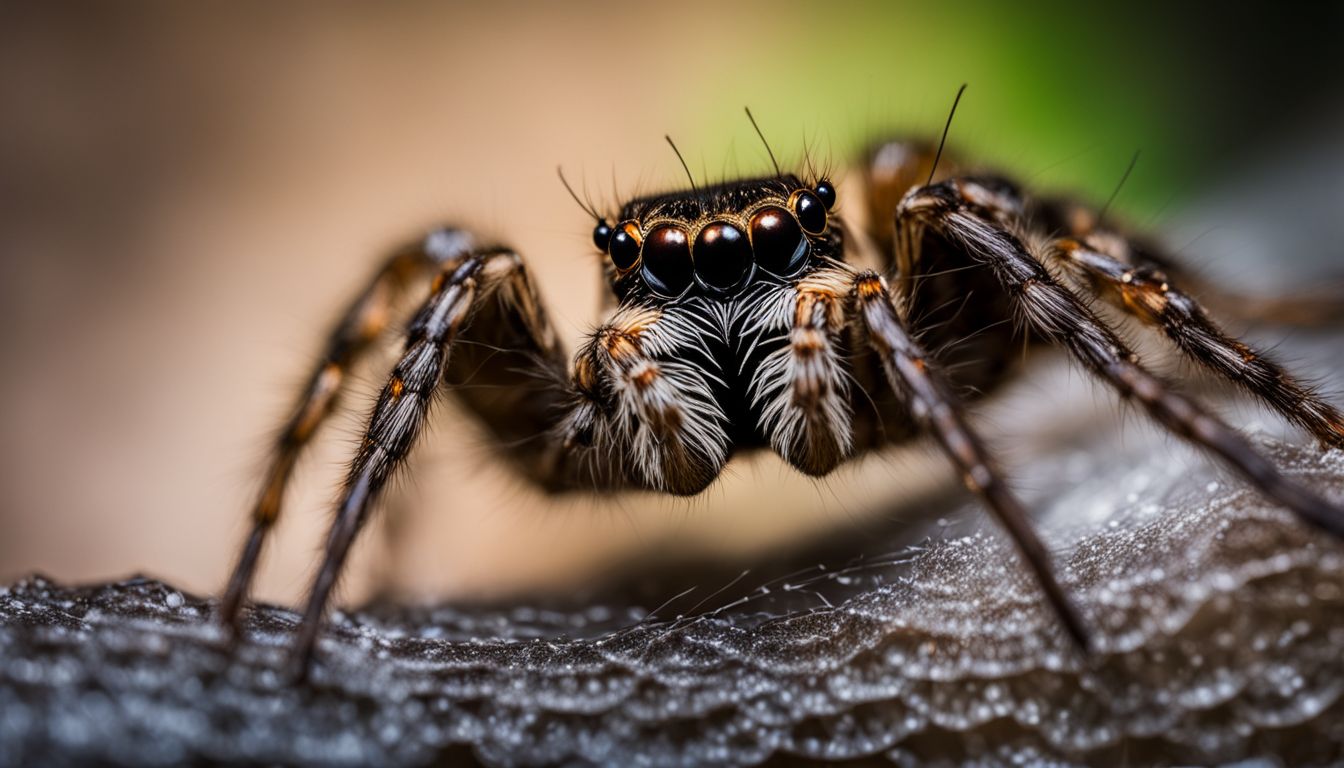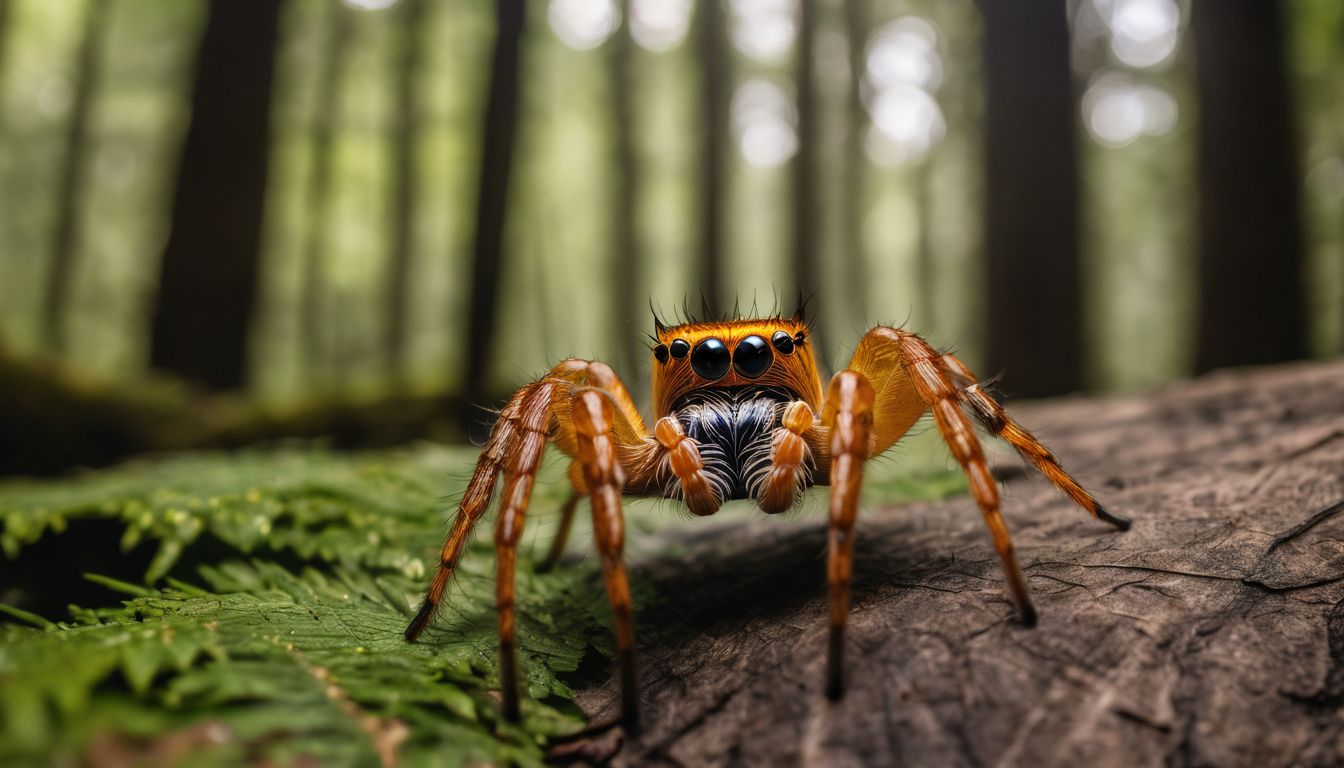Have you ever wondered if those eight-legged critters roaming around your house can smell what’s in the air? Despite not having noses like mammals, spiders possess a sophisticated sense of smell.
This blog post will uncover the secrets behind how spiders detect scents and what this means for their survival. Stay tuned to get a whiff of spider science!
Key Takeaways
- Spiders don’t have noses like humans, but they can still smell using their legs, which are covered with tiny sensory hairs that help them pick up scents from the air around them.
- Their olfactory abilities play a crucial role in helping spiders find food, avoid danger, and navigate through their environment using chemoreceptors and special sensory structures on their legs.
- Spiders are sensitive to specific scents such as those of predator insects or potential mates, making them highly adaptable to locating prey efficiently.
- Certain scents like vinegar, mint, cayenne pepper, citrus fruits, cinnamon, and diatomaceous earth can repel spiders naturally and discourage them from entering living spaces.
Unraveling the Mystery: Do Spiders Have Noses?

So, we learned that spiders don’t have noses like us. But they still need to smell! These amazing creatures use their legs to do what a nose does for humans. Spiders have lots of tiny hairs on their legs and bodies that pick up smells from the air around them.
Think of it like having a bunch of little noses all over your arms and feet! This helps spiders find out about other animals near them, figure out where food is, or even sense danger.
It’s a cool trick for an animal without a real nose!
Understanding Spider Anatomy and Olfactory Structures

Spider anatomy and olfactory structures play a crucial role in how spiders detect scents. From sensory hairs to tracheas and book lungs, these unique features contribute to the spider’s sense of smell and ability to navigate their environment.
The Role of Sensory Hairs
Sensory hairs on spiders play a huge part in their lives. These tiny bristles cover their bodies and pick up smells, tastes, and touches from the world around them. Spiders feel vibrations and air movements through these hairs, which helps them find out what’s happening nearby without seeing it.
They have special chemoreceptors in sensory slits that let them taste chemicals in the air or on surfaces they touch with their legs or mouthparts.
These tactile hairs are key for spiders to learn about danger or food close by. For instance, when prey like a fly buzzes near a spider, the vibrations it makes in the air can be felt by the spider’s sensitive hairs.
Then the spider knows where to go to catch its meal. The same thing happens if something big comes near that might hurt the spider – those hairs help it sense this and run away fast!
Tracheas and Book Lungs in Respiration
Spiders use their sensory hairs to feel around, but they also need to breathe. They do this with special parts called tracheas and book lungs. Let’s take a closer look at these breathing helpers.
Tracheas are like tiny tubes that carry air right into a spider’s body. These tubes go all over inside the spider, letting air touch many places. Now, book lungs are really neat; they look like pages in a book with lots of space for air too! Think of them as different from human lungs because we don’t have anything like it.
Both tracheas and book lungs help spiders stay alive by bringing in the oxygen they need and getting rid of carbon dioxide.
Most spiders have both tracheas and book lungs together which is pretty special because no other animals have this combo – only spiders! This makes sure that even if one part isn’t working great, the other can help out so the spider keeps on going strong.
So when you see a spider creeping around, remember it’s silently using its cool trachea-tube system or flipping through its unique ‘book’ just to take a breath!
The Spider’s Olfactory Abilities: How Spiders Smell Without a Nose
Spiders may not have noses, but they have special structures that enable them to detect scents in their environment. Their chemoreceptors play a key role in scent detection, allowing spiders to sense prey, predators, and potential mates even without a traditional nose.
Chemoreceptors and Scent Detection
Spiders may not have noses like humans, but they are equipped with specialized sensory hairs and chemoreceptors on their legs and pedipalps that allow them to detect scents in their environment.
These chemoreceptors are sensitive to pheromones and other chemical signals, helping spiders find food, mates, and avoid predators. Despite lacking a traditional olfactory organ, spiders have evolved unique mechanisms for scent detection essential for their survival.
Understanding how spiders utilize chemoreceptors for scent detection sheds light on their remarkable ability to navigate the world primarily through chemical senses. The next section will delve into the intriguing relationship between spiders and scents, exploring what attracts or repels these fascinating arachnids beyond our conventional understanding of smell.
Sensitivity of a Spider’s Sense of Smell
After detecting scents through chemoreceptors and scent detection, spiders showcase an impressive sensitivity to smell. Their ability to detect minute quantities of chemicals in the air is astonishing.
Spiders have adapted to be highly sensitive to specific scents, such as those of predator insects or potential mates. This heightened olfactory sense enables them to navigate their environment and locate prey efficiently.
The sensory hairs on their legs play a crucial role in this process, allowing them to taste and smell chemical compositions with remarkable precision.
Spiders and Scents: What Attracts and Repels Them
Discover the common scents that repel spiders and learn about the relationship between spiders and smell in their environment. Also, find out if LED lights attract spiders and how scent plays a role in their behaviors.
Common Scents That Repel Spiders
Spiders dislike certain scents and are repelled by them. You can use these smells to keep spiders away from your home. Here are some common scents that spiders hate:
- Vinegar: Spiders find the strong smell of vinegar unpleasant and will avoid areas where it is present.
- Mint: The fresh scent of mint deters spiders, making it a useful natural repellent.
- Cayenne Pepper: Spiders are sensitive to the heat and pungency of cayenne pepper, causing them to stay away from treated areas.
- Citrus: The citrusy aroma of lemon, orange, or grapefruit can deter spiders from entering your home.
- Cinnamon: Spiders find the spicy and warm fragrance of cinnamon unpleasant, making it an effective repellent.
- Diatomaceous Earth (DE): This powdery substance disrupts the exoskeleton of insects, including spiders, acting as a deterrent when sprinkled in spider-prone areas.
The Relationship Between Spiders and Smell in Their Environment
Spiders rely on their sense of smell to find food and mates, as well as to navigate their environments. They are attracted to scents that mimic their prey or potential mates, such as floral or fruity smells.
However, strong perfumes can repel them. Pheromones play a significant role in spider communication and mate attraction, contributing to the unique smell associated with these arachnids.
Additionally, some spiders have specialized chemosensory structures associated with their sense of taste and smell, allowing them to detect specific scents in their surroundings.
Do LED Lights Attract Spiders?
LED lights do not directly attract spiders. However, they may lure the insects that spiders feed on. Spiders are clever opportunists and might be drawn to areas with LED lights where bugs gather.
Some studies have examined whether spiders are more attracted to LED lights compared to traditional light sources. LED strip lights could appeal to spiders because insects are attracted to the warmth of the lights.
While LED lights may not directly attract spiders, they may indirectly create an environment that draws the insects spiders prey upon.
Conclusion
In conclusion, spiders may not have noses like humans, but they do have a keen sense of smell through special sensory organs on their legs and pedipalps. Their olfactory abilities play a crucial role in how they experience the world, find food, avoid danger, and navigate their environment.
Understanding their unique sense of smell sheds light on the fascinating ways in which spiders interact with scents and odors in their daily lives.
To learn more about how lighting can impact spiders, read our article on “Do LED Lights Attract Spiders?“.
FAQs
1. Do spiders have noses?
Spiders do not have noses like us. They use hairs on their legs to sense smells in the air.
2. How do spiders smell things without a nose?
Spiders smell with their olfactory system using tiny hairs on their legs and body to detect scents carried by the wind.
3. Can all spiders smell in the same way?
Different kinds of spiders may smell differently. For example, jumping spiders and wolf spiders might use different parts of their bodies to sense smells.
4. What do spiders use their sense of smell for?
Spiders use smell to find food, look out for danger, and catch warning signals from other creatures or territorial scents left by other spiders.
5. Are some spiders better at smelling than others?
Some night-time hunters like tarantulas are very good at smelling because they need this skill to survive when it’s dark and they can’t see well.
6. What else is special about how a spider senses its world besides smelling?
Apart from using scent, some create sounds called stridulation, feel vibrations around them, or leave silky trails – all as ways to talk with each other and know what’s happening nearby.




